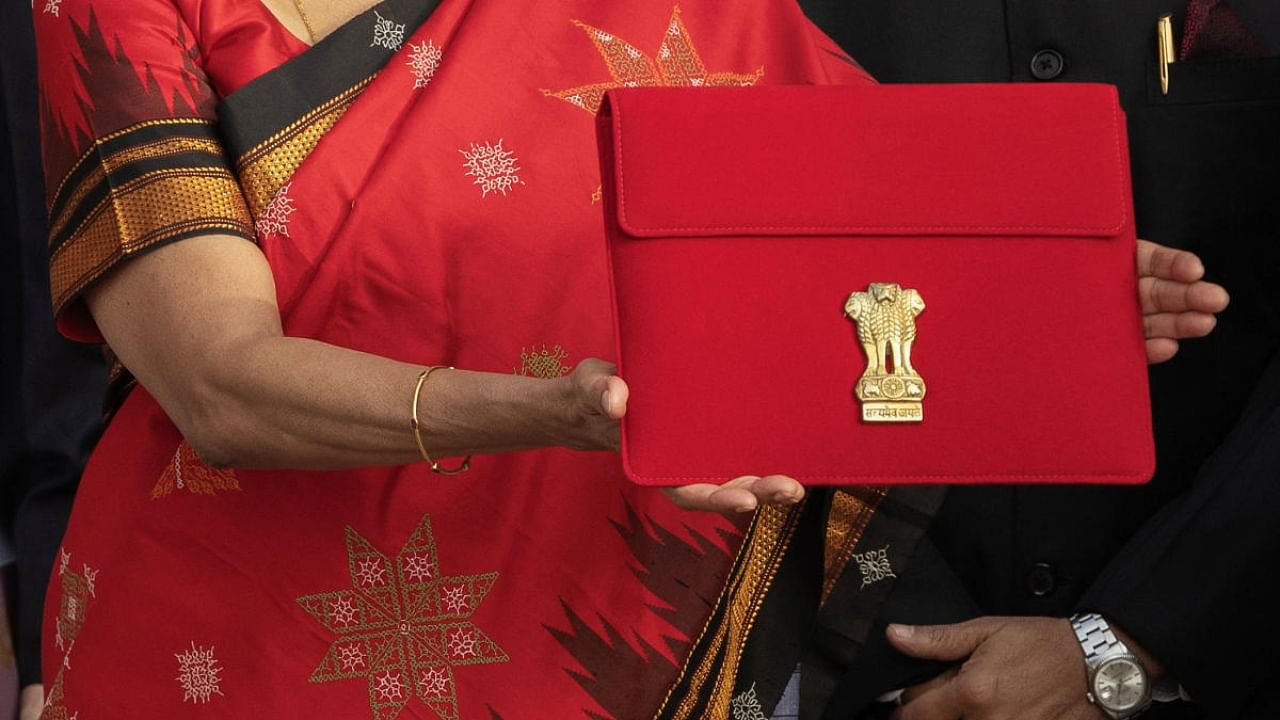
In the Union Budget 2023-24 presented on February 1, Finance Minister Nirmala Sitharaman emphasised on the significance of Pradhan Mantri Garib Kalyan Anna Yojana (PMGKAY) in ensuring food and nutritional security of more than 800 million people during the pandemic years. With depleting foodgrain stocks under the Food Corporation of India (FCI) and the high food subsidy bills of Rs 2.87 lakh-crore during the Financial Year (FY) 2022-23 (revised estimate (RE)), it wasn’t a surprise that the distribution of additional free grains under the PMGKAY was discontinued in January.
Further, Sitharaman highlighted the recent announcement of the Union government to provide free food grain to all Antyodaya and priority households till December under the PMGKAY, budgeted at Rs 1.97 lakh-crore in FY’24. The government’s policy actions are set to reduce the fiscal deficit to 5.9 percent in FY’24 from 6.4 percent in FY’23 (RE).
However, what will be the impact of this withdrawal on the poor’s nutritional security who now have to purchase the additional entitlement at market rates? Particularly at a time when both staples are under high inflationary pressure (wheat recording inflation of 22.2 percent, and rice 10.5 percent in December).
Malnutrition is a multi-dimensional problem, and requires multi-sectoral solutions, focusing on women’s education, childcare, improved sanitation, and safe drinking water apart from access to an adequate and nutritious diet. It is through this lens that the budgetary allocation for various nutrition-sensitive programmes including women’s education, WASH (Water, Sanitation and Hygiene), etc, need to be understood.
The Integrated Child Development Scheme (ICDS), now known as Saksham Anganwadi and POSHAN 2.0, is allocated Rs 20,554 crore in FY’24 — that’s a meagre increase of 1 percent over the revised estimates of FY’23. In contrast, the Pradhan Mantri Poshan Shakti Nirman (the mid-day meal scheme) saw a drop in the budgetary allocation to Rs 11,600 crore in FY’24 from Rs 12,800 crore in FY’23 (RE). With the reopening of schools and anganwadi centres after the pandemic-induced shutdown, the total allocation earmarked for the mid-day meal scheme saw an increase of 25 percent in the revised estimates of FY’23 over its budget estimates.
The fiscal outlay towards women's education under the Samagra Shiksha, an overarching school education programme under the National Education Mission, is Rs 37,453 crore in FY’24 (a mere 0.2 percent higher than the budget estimates of the previous year). The total allocation for the SAMBAL scheme (inclusive of the Beti Bacho, Beti Padhao scheme) was Rs 562 crore in FY’24 — same as Budget 2022 estimates. It must be noted that during FY’23, around 41 percent of the budgetary allocation under the SAMBAL scheme was underutilised. Instead, the best policy option would be to provide liberal scholarships and financial incentives to reduce the dropout rates among girl students, particularly at the secondary and higher education levels.
Read | Budget 2023 gives a virtual cold shoulder to cryptocurrencies
Another important sector for malnutrition is WASH. There is a remarkable increase in the budgetary allocation towards the Jal Jeevan Mission and the Swachh Bharat Abhiyan in FY’24. However, around 30 percent of the budgetary allocation under the Swachh Bharat Mission(Rural) was underused in FY’23. Despite an increase in the coverage of improved sanitation (48.5 percent in 2015-16 to 70.2 percent in 2019-21) and safe drinking water facilities (94.4 percent in 2015-16 to 95.9 percent in 2019-21) as per NFHS-5 data, the nutritional status of women and children in tandem did not witness any significant improvement. Even today India has an appallingly high level of undernutrition with 35.5 percent of children under five being stunted. Moreover, there exists a large inter-regional disparity in child stunting rates, primarily clusters in districts in Bihar, Uttar Pradesh, Odisha, Jharkhand, and Madhya Pradesh.
It is important that nutritional-sensitive programmes start focusing on behavioural change, and generate awareness among citizens regarding healthy sanitation practices, nutritious diet, child-caring practices, and their linkages with nutrition. Clearly, the governments’ piecemeal efforts to improve access to women's education, child healthcare, and WASH facilities have missed the earlier target of bringing down stunting among children (aged 0-6 years) to 25 percent by 2022 under the POSHAN Abhiyan.
Union Budget 2023 has tightened its purse strings for POSHAN which might further derail India’s progress in achieving holistic nourishment of women and children. Until the government addresses the multidimensional determinants of malnutrition on an urgent basis through targeted and region-specific nutrition-sensitive interventions, it is unlikely that India will be able to overcome the challenges of nutritional security.
Shyma Jose is Fellow at ICRIER (Twitter: @shyma_jose), and Kriti Khurana is PhD scholar, BITS-Pilani, Hyderabad (Twitter: @kritikhurana12)
(Disclaimer: The views expressed are the author's own. They do not necessarily reflect the views of DH.)